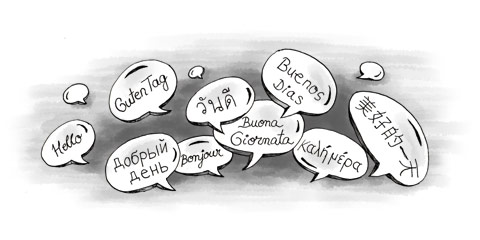Malaysia is a very multicultural country, and apart from Malay and English, there are also other languages represented, such as Chinese and Tamil, or some indigenous languages.
The term “Malay” actually refers to a group of languages which are all closely related. Apart from Malaysia, Malay is spoken in Brunei, Indonesia, Singapore, Philipines and Southern Thailand. This means learning Malay gives you the possibility to communicate with over 260 milion speakers, which make Malay one of the most spoken languages in the world.
Malay in Malaysia is called Bahasa Malaysia. The term Bahasa Melayu, which is actually how the language is referred to in Brunei and Singapore, is also very common and is also used on governmental websites. The language became official in Peninsular Malaysia in 1968 and in East malaysia in 1974, a few years after the Independence from the United Kingdom.
Characteristics of Bahasa Malaysia
The extension of Malay to the wide region of peninsular and insular Southeast Asia is associated to the spread of Islam during the rise of Muslim kingdoms.
The Malay language group is a member of the Austronesian language family. It is officially written using the Latin Alphabet called Rumi. An Arabic script called Jawi also exists and measures to preserve this script are currently undertaken in Malaysia. However, as Rumi is the official script, and the Arabic script might be a bit difficult for Western expatriates to adopt, you can pefectly get along in Malaysia without learning it in the beginning.
It is not very difficult for foreigners to learn Malay, with a bit of effort and discipline of course. There is no conjugation and declension in the Malay language, and grammatical gender is not used.
Malay is an agglutinative language, meaning that most words are formed by joining morphemes together thus adding meaning and grammatical forms.
Many English words have also remained from the period of colonisation and are now an inherent part of Malay. Examples are the Malay word “bas” for “bus” or “teksi” for “taxi”.
How far can you get with English in Malaysia?
To prepare your move to Malaysia, to solve all bureaucratic problems and to get settled in Malaysia, you probably will not need to speak Malay. Getting around your city and area is very easy for expatriates as bus and train timetables, as well as street signs are all in English. However, all this applies if you have moved to Kuala Lumpur or other major Malaysian cities. Yet even there you might experience problems when taking a cab or buying food in the grocery store around the corner if you do not have a basic knowledge of Bahasa Malaysia. When you move to smaller towns you will experience that not as many people speak English.
In other words: learn Malay. Not only to make your everyday life more convenient, but also to experience the full scale of the culture you have just moved to.

